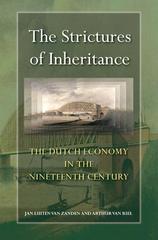Q.# 1 Indicate whether each of the following is TRUE or FALSE
If the economy is experiencing a recessionary gap, scal policy dictates that a reduction in the tax rate is the apprOpriate course of action 2. If the economy is experiencing an inationary gap, monetary policy dictates that the government should switch their deposits from the Bank of Canada to the chartered banks 3. If managed correctly, an economy can have both low ination and a low unemployment rate 4. Government decits are the accumulations of annual debts As the nominal interest rate increases. the quantity demanded of money decreases If the exchange rate increases (u$fc$), then the ination rate will also increase 7. Monetarists believe that the velocity of money and the real GDP are stable. 1. An increase in the money supply causes: A) an initial surplus in the money market, followed by a fall in the equilibrium interest rate B) an initial surplus in the money market, followed by a rise in the equilibrium interest rate 0) an initial shortage in the money market, followed by a fall in the equilibrium interest rate D) an initial shortage in the money market, followed by a rise in the equilibrium interest rate E) no change in the equilibrium interest rate 2. Which of the following is not one of the functions of the Bank of Canada? A) working with the federal Department of Finance in developing scal policy B) ensuring the stable operation of nancial markets C) managing the money supply D) acting as the federal government's scal agent E) holding the deposits of members of the Canadian Payments Association 14. A reduction in taxes may: A) increase saving B) increase real output 0) reduce unemployment D) increase consumption E) do all of the above 15. According to the quantity theory of money, as accepted by Milton Friedman and other monetarists: A) the velocity of money is highly volatile B) real output can vary a great deal from its potential level C) ination is usually caused by shifts in aggregate supply D) both the velocity of money and real output are fairly stable E) the money supply is usually constant 5. Which of the following is a drawback of monetary policy? A] it has a long decision lag B) it cannot be focused on particular regions 0) it is weaker as a tool to contract the economy than it is as a tool to expand the economy D) it is detached from day-to-day politics E) it has a short decision lag










